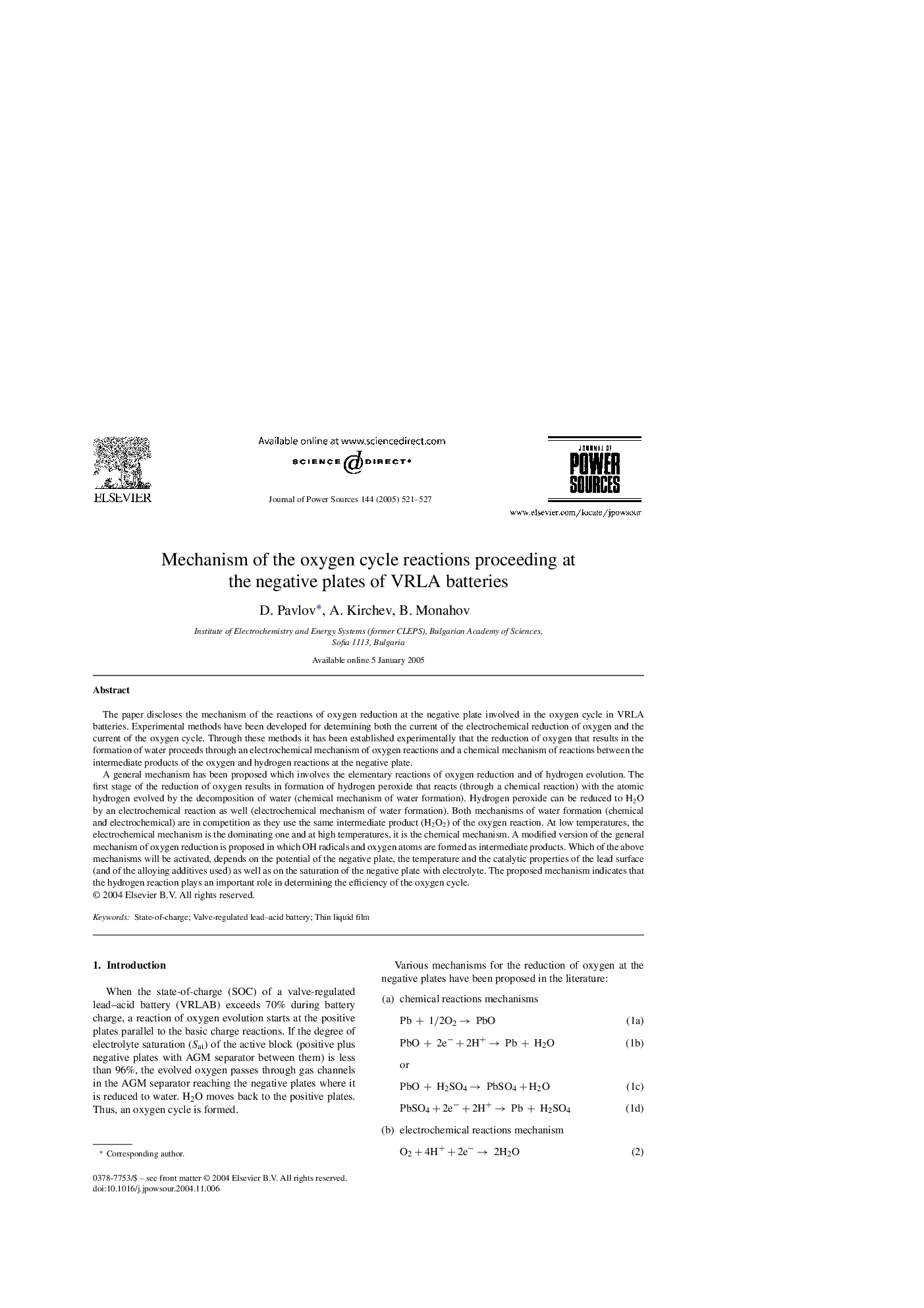| Article ID | Journal | Published Year | Pages | File Type |
|---|---|---|---|---|
| 10568080 | Journal of Power Sources | 2005 | 7 Pages |
Abstract
A general mechanism has been proposed which involves the elementary reactions of oxygen reduction and of hydrogen evolution. The first stage of the reduction of oxygen results in formation of hydrogen peroxide that reacts (through a chemical reaction) with the atomic hydrogen evolved by the decomposition of water (chemical mechanism of water formation). Hydrogen peroxide can be reduced to H2O by an electrochemical reaction as well (electrochemical mechanism of water formation). Both mechanisms of water formation (chemical and electrochemical) are in competition as they use the same intermediate product (H2O2) of the oxygen reaction. At low temperatures, the electrochemical mechanism is the dominating one and at high temperatures, it is the chemical mechanism. A modified version of the general mechanism of oxygen reduction is proposed in which OH radicals and oxygen atoms are formed as intermediate products. Which of the above mechanisms will be activated, depends on the potential of the negative plate, the temperature and the catalytic properties of the lead surface (and of the alloying additives used) as well as on the saturation of the negative plate with electrolyte. The proposed mechanism indicates that the hydrogen reaction plays an important role in determining the efficiency of the oxygen cycle.
Related Topics
Physical Sciences and Engineering
Chemistry
Electrochemistry
Authors
D. Pavlov, A. Kirchev, B. Monahov,
